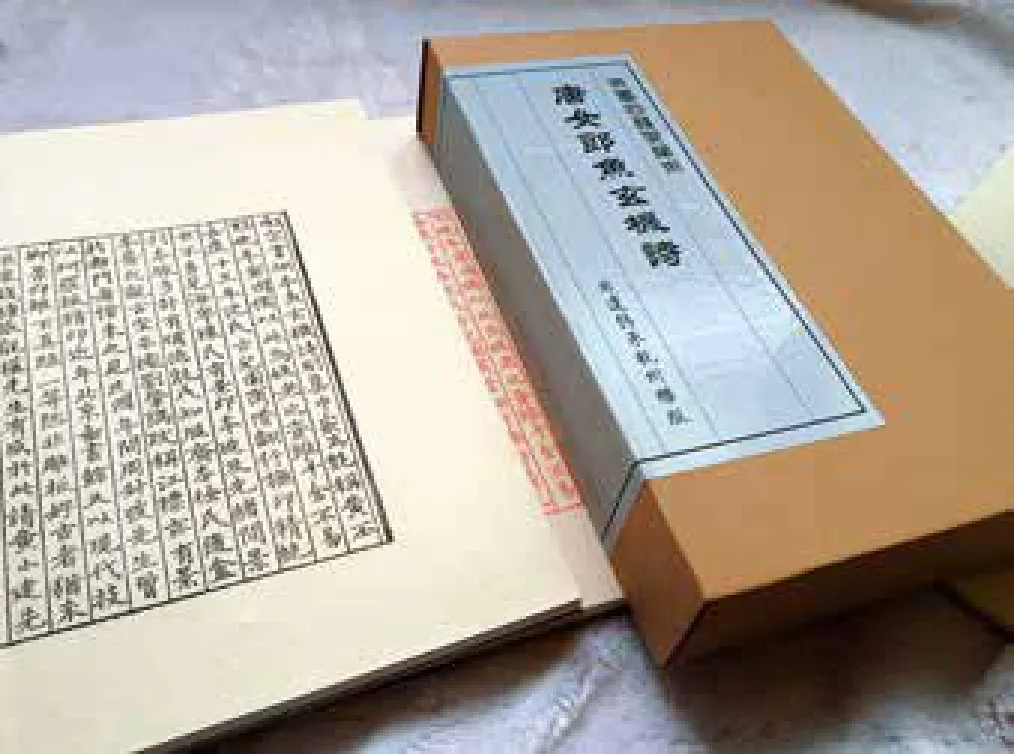Block Printing Master: From Heart to Hands
By Han Sheng
Block Printing Master: From Heart to Hands
By Han Sheng
Huang Xiaojian, in his 60s, is China’s only national master specialized in woodblock printing carving. He has been working with his carving knives, woodblocks, and rice paper for 40 years.
He lives in an apartment on the second floor of an age-old western-styled house at the foot of Gem Hill by the West Lake, Hangzhou. The living room is where he usually works. The bookcases are heaped with books, art albums. On the top of a large wooden table are writing brushes, an ink stone, carving tools, woodblocks under work. On the chairs and a couch are heaps of woodblocks already finished and prints for his proofreading and personal collection.
I walk into the apartment while he is working at a small wooden table on the balcony. He stands up, beaming a smile. “I like to work on the balcony because of ample light here. It has been sunny and warm here for days.”
We come to his studio and sit down. Myfirst question is, “How did you come to this art?” I mean to know how he started as a woodblock carver. His father was a block printing carver. Huang Xiaojian began to work at a printing factory attached to the Zhejiang Academy of Fine Arts in 1978. He studied under the tutelage of Zhang Genyuan, a master known for his seal engraving. He studied carving and printing systematically.
Back then, ancient block printing technology was already outdated, and few people still studied to be carvers as printing technology kept evolving. He was one of the few. He studied for three years and then, the study project was called off. All the fellow apprentices turned to other interests. Huang didn’t want to give up. He kept doing what he had learned in his spare time. As he gradually mastered the technique, the technique itself gradually became more outdated. Now, it is on the verge of extinction. He had the slightest idea that he was to dedicate his lifetime to the art. He has been working on it for nearly 40 years.
The most eye-catching object in his studio is a silver certificate issued to him in May 2011 by the State Council and the Ministry of Culture. That year, he was officially appointed a master of woodblock printing technique, a national intangible cultural heritage.
Asked how his private passion became his profession and how he carved his way to fame, he explains, “I ran into a printing technique developed in the Ming Dynasty years ago. I was fascinated and determined to see if I could do it.”
The printing creates a relief effect on the rice paper. It was the top trade secret of the ancient woodblock printing. However, there was only a brief text description and there was no detailed text to explain how it was done. The technique was lost in the Ming. And no one in the Qing could do it. He began to experiment. After five years of hard work, he finally restored the lost technique. Using the technique, he successfully reprinted a book of the Song. In 2006, Hangzhou Woodblock Printing Technique was inscribed on the directive of Zhejiang Intangible Cultural Heritage and he was appointed the master of this technique.

黄小建影刻宋本《唐女郎鱼玄机诗》(朱墨合璧典藏本)A modern copy of a Song edition of poems by a Tang poetess carved and printed in black and red ink by Huang Xiaojian.

黄小建国画雕版《苏堤春晓》This printing woodblock is created by Huang Xiaojian in the style of traditional Chinese painting featuring the beauty of a West Lake highlight.
Over years, Huang Xiaojian has carved woodblocks for books and bookplates. He has been contracted to do a lot of work. Huang shows me some of his works. One of them is an acceptance notification for a classics study course. The notification was printed on a woodblock carved by Huang. Many of his commissions are private for and of celebrities. He made a birthday print for Dong Qiao, a well known essayist. He also made letter heading for Lien Chan, the former president of Kuomintang in Taiwan.
Though woodblock prints are beautiful, Huang Xiaojian still has the difficult of seeing the young who are willing to take the art a step further into future. “It takes about 6 years to master the art. One needs to study painting, calligraphy and engraving. Most young people hope to make money a little bit fast. Many take to design,” Huang explains the situation.
Fortunately, there are 6 young apprentices studying woodblock printing under his tutelage, including a couple of PhDs and Huang’s son, a graduate from China Academy of Art. Huang is happy to teach them. He comments to me artistically and philosophically: “My hands demonstrate to them what my heart says.”
Huang is willing to demonstrate. In his spare time, he visits communities and demonstrates the ancient art to children. He spends a lot of time doing this and feels inspired. He wants to inspire more people to learn more about woodblock printing.
Saying goodbye to the master, I say I will be very happy if he carves “from my heart to my hands” and prints it as a motto. There were masters in the yesteryears of woodblock printing. Huang is the one I meet today and hopefully there will be more in the future.

